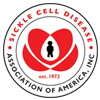Trusted Resources: Evidence & Education
Scientific literature and patient education texts
Stable-Isotope Dilution HPLC-Electrospray Ionization Tandem Mass Spectrometry Method for Quantifying Hydroxyurea in Dried Blood Samples
source: Clinical Chemistry
year: 2016
authors: Anu Marahatta, Vandana Megaraj, Patrick T. McGann, Russell E. Ware, Kenneth D. R. Setchell
summary/abstract:Background:
Sickle cell anemia (SCA) is a life-threatening blood disorder characterized by the presence of sickle-shaped erythrocytes. Hydroxyurea is currently the only US Food and Drug Administration-approved treatment and there is a need for a convenient method to monitor compliance and hydroxyurea concentrations, especially in pediatric SCA patients.
Methods:
We describe a novel approach to the determination of hydroxyurea concentrations in dried whole blood collected on DMPK-C cards or volumetric absorptive microsampling (VAMS) devices. Hydroxyurea was quantified by electrospray ionization LC-MS/MS using [13C15N2]hydroxyurea as the internal standard. Calibrators were prepared in whole blood applied to DMPK-C cards or VAMS devices.
Results:
Calibration curves for blood hydroxyurea measured from DMPK-C cards and VAMS devices were linear over the range 0.5-60 μg/mL. Interassay and intraassay CVs were <15% for blood collected by both methods, and the limit of detection was 5 ng/mL. Whole blood hydroxyurea was stable for up to 60 days on DMPK-C cards and VAMS devices when frozen at -20 °C or -80 °C. Whole blood hydroxyurea concentrations in samples collected on DMPK-C cards or VAMS devices from SCA patients were in close agreement.
Conclusions:
This tandem mass spectrometry method permits measurement of hydroxyurea concentrations in small volumes of dried blood applied to either DMPK-C cards or VAMS devices with comparable performance. This method for measuring hydroxyurea from dried blood permits the evaluation of therapeutic drug monitoring, individual pharmacokinetics, and medication adherence using heel/finger-prick samples from pediatric patients with SCA treated with hydroxyurea.
DOI: 10.1373/clinchem.2016.263715
read more full text
Related Content
-
Randomized Feasibility Trial to Improve Hydroxyurea Adherence in Youth Ages 10–18 Years Through Community Health W...Introduction: The main therapeutic int...
-
A Conversation on Hydroxyurea: Insights and Information for the Sickle Cell Communityhttps://www.youtube.com/watch?v=Y6fmJn-5...
-
ADDMEDICA receives FDA-approval for orphan drug Siklos®, first and sole hydroxyurea-based treatment for paediatric ...ADDMEDICA has announced that the...
-
SCA Therapy Hydroxyurea Doesn’t Boost Malaria Risk in Sub-Saharan Africa, Study FindsHydroxyurea, a treatment recommended for...
-
Targeted education after an emergency department visit increases hydroxyurea initiation in children with sickle cell...Introduction: Hydroxyurea decreases man...
-
What Should Teens Ask Their Doctors About Hydroxyureahttps://www.youtube.com/watch?v=VZn15uXQ...
-
Hydroxyurea improves lung function in children with sickle cell diseaseFor the first time, researchers were abl...
To improve your experience on this site, we use cookies. This includes cookies essential for the basic functioning of our website, cookies for analytics purposes, and cookies enabling us to personalize site content. By clicking on 'Accept' or any content on this site, you agree that cookies can be placed. You may adjust your browser's cookie settings to suit your preferences. More Information
The cookie settings on this website are set to "allow cookies" to give you the best browsing experience possible. If you continue to use this website without changing your cookie settings or you click "Accept" below then you are consenting to this.




 +myBinder
+myBinder
